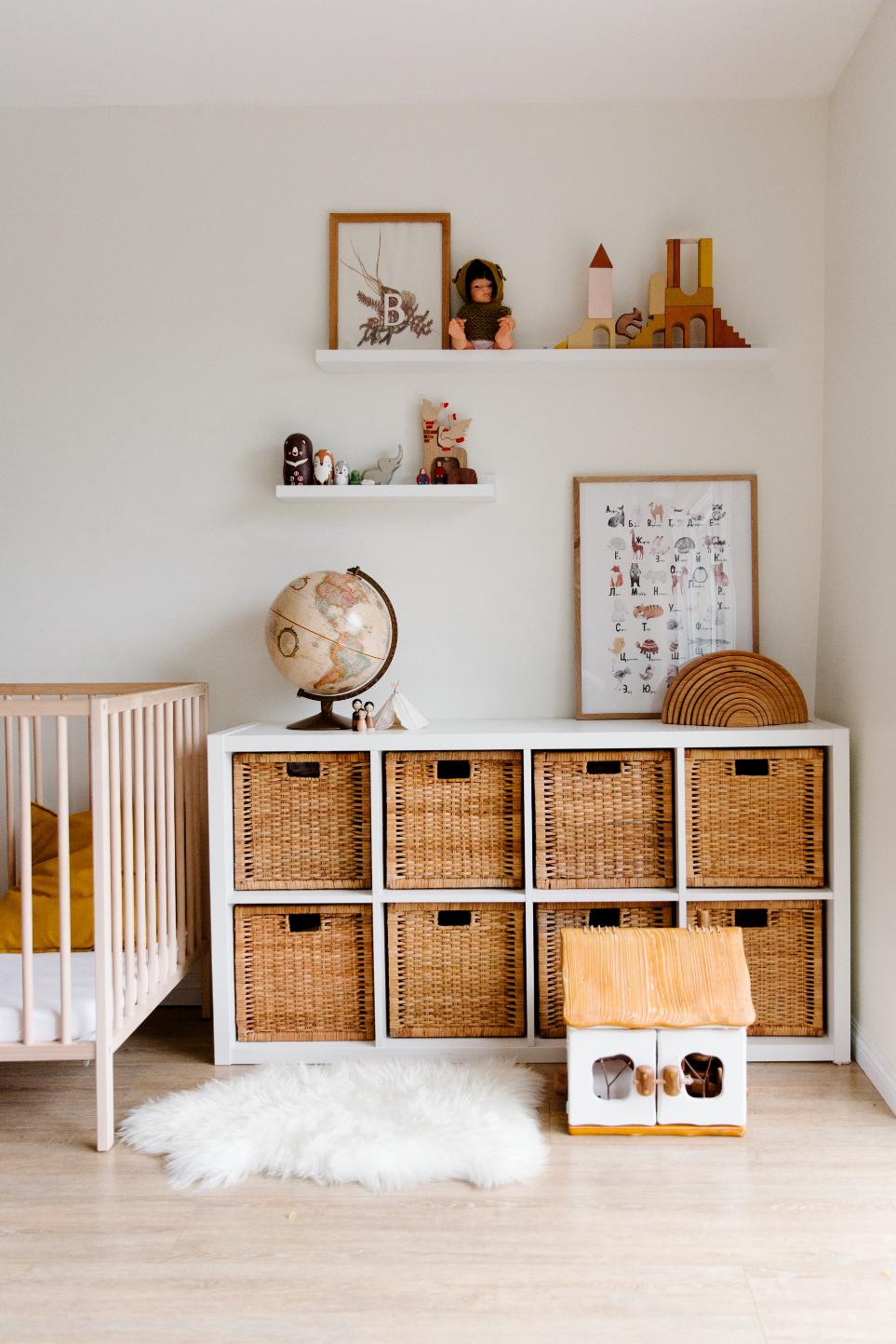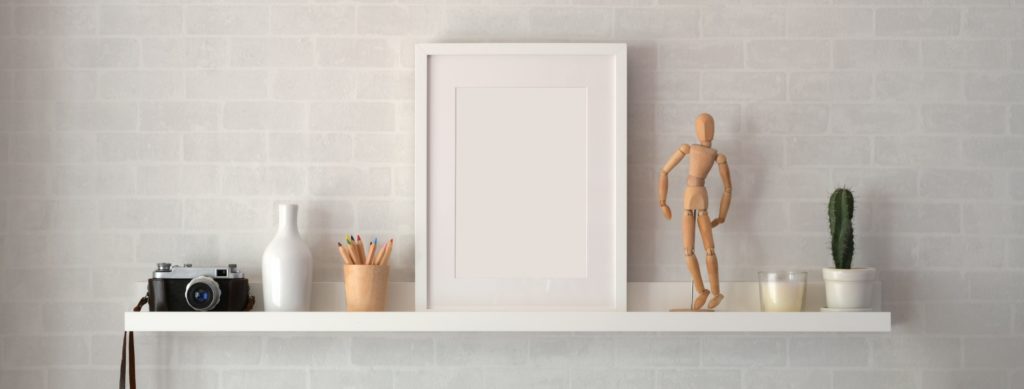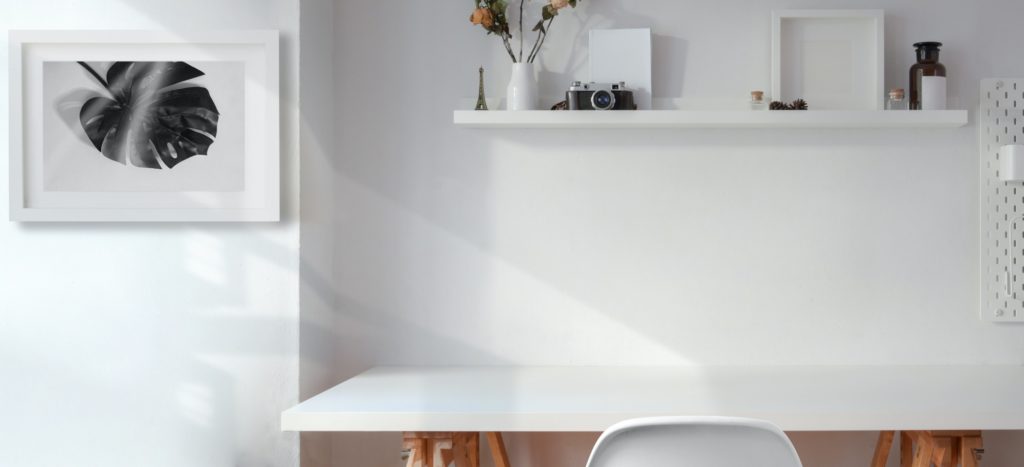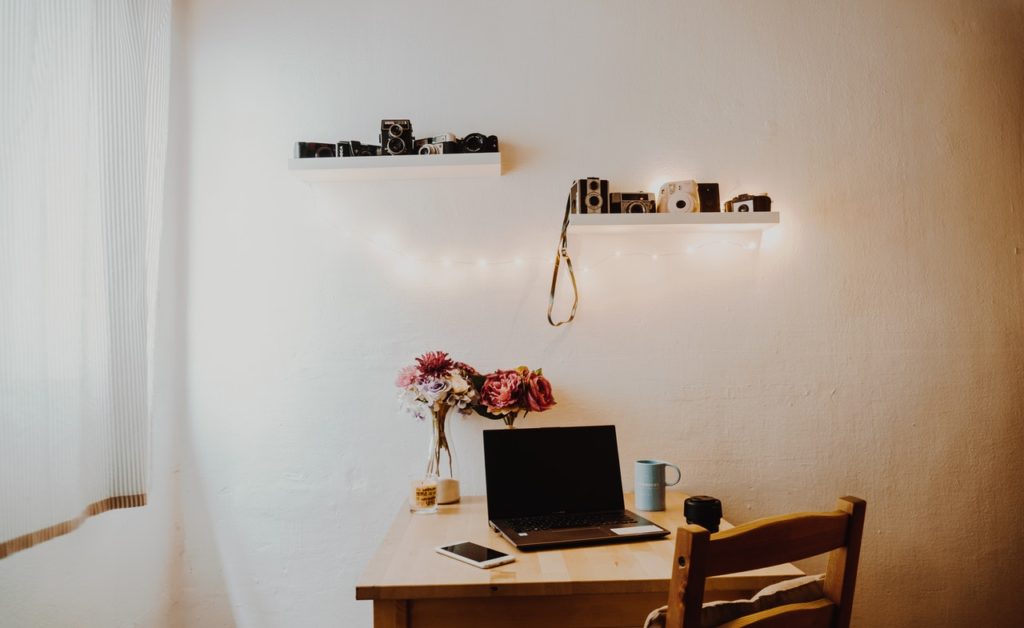
Don’t be intimidated by the seeming complexities of building your own DIY floating wood shelves & clothing bar. These simple instructions are easy to follow and perform. We’ve broken them down for you to make it super easy to follow along.
Tools and materials for the top shelf and clothing bar are as follows:
- 2 x 12 x 8 board of pine (sized to fit the space, such as a closet).
- Wood stainer and/or finisher – we recommend using one that highlights the natural grains in the wood. Ask your local woodshop or big-box store for their recommendations.
- 1 ¼ inch wooden hanger rod for the clothing to hang from (we suggest poplar, but you can match it with the shelving).
- Seven to ten 8-inch floating metal shelf brackets (will support about 8 feet of shelf length).
- Rod center supports and rod end supporters. That goes onto the hanger rod ‘s ends to add some flair and also supports the weight at the center of the rod to prevent bowing.
- Sanding disks and an appropriate sander. We suggest an initial pass of 80 grit followed by a finishing pass of 120 grit).
- Power drill (you won’t want to be hand-screwing these pieces together).
- ⅝ drill bit as to create a hole slightly over 6 to 8 inches deep (depth needed will depend on the number of brackets that are used; 6 inches would be adequate for 6 brackets).
- Miter saw or a circular saw (for cutting everything to size).
Stud finder (provides a non-invasive way to check the places you can insert your supports). - Level gauge (doesn’t matter the size so long as it’s able to remain true and your wood is totally smoothed flat).
- Two pieces of scrap wood, the color of your choice, with a straight edge at least eight inches long.

Once you have gathered all the proper materials…
…make sure that you make space for where it will all layout. If you live in an apartment, be aware that there might be some locations outside that are community-shared which cannot be easily used for this work.
Try your kitchen area or an area that is otherwise commonly used for parking. Be sure when staining the wood that you have plenty of fresh air.
Wood stain can be hazardous to breathe in for long periods and could even make you pass out.
Mark the height where the bottom of the shelf will sit on one of the back corners of the closet. Typically, it will be a little under 70 inches from the carpet.
Then, use your level to mark a straight line along the back wall’s length. Begin this line at your original marking point. Once drawn, use your level again to extend the line about 10 inches along the adjacent walls.
Take the scrap wood you’ve sourced and align the board’s straight edge with the 10-inch line you’ve just drawn. Attach the scrap wood to your wall with screws.
This is where your stud finder can play an important role, but remember that these will be a temporary support for installing the long shelf and to make sure it fits.
While optional, this process will rescue you from punching a hole in the wall while working with an oddly weighted and thick wooden shelf.

Use your saw
Use your saw to cut the 2 x 12 x 8 to the proper length. If the corners were not squared, they will need to be adjusted so as to fit smoothly into your closet space.
After the cutting, trial fit the shelf into its spot by sitting it onto the temporary support screws. If there is a problem with the fit, slowly remove more wood from the board in small increments with the edge of the saw until it slides into place without excessive force.
The shelf should now properly rest on the supports at this point and be level with how you’d like your platform. Your next step is tracing the top of the shelf with the back wall.
Make your marks
Use your stud finder again and note with a pencil each stud toward the top of your shelf line. Mark the closest estimation of where both sides of each stud are, if possible.
Take care to mark the sides of your shelf as well. Don’t skip any studs or go in a random pattern; go from right to left just like reading a book.
By this point, you should now have the sides of each stud marked on the shelving. The wall above the shelf will also have your marks; take care not to smudge them off.

Carefully remove the shelf from its temporary resting area and mount the floating shelf brackets directly into the studs. Use the lines you traced earlier to lead.
Make certain that the top of the bracket plates is aligned to the markings at the top of the shelf.
Time to drill
Locate the stud marks that you’ve drawn at the top of the shelf and extend them all the way to the rear of your board.
Each mark will serve as a guide to find the proper site to drill out the 5/16 inch holes so that the floating shelf brackets can slip easily inside.
You might find that about 3/16 of an inch below the center of the mark was the best positioning. Brace the shelving and drill your holes as straight as possible; this isn’t something you’d like to repeat as all of the above would need to be done again with a new board and staining process.
Too much angle to your holes will stop the shelf from sliding onto your brackets, and you could break something (or someone) if you try to force it.
If you have any leftover scrap wood, then you can practice your drilling method with a trial run or two before attempting to drill the actual shelf.

Some fine tuning
After you’ve finished drilling your holes, take sandpaper, and make sure that the back lip of each drilled hole is smooth. This will prevent chips of wood from flaking off and getting lost in the carpet only for your foot to find it later.
It’ll also safeguard the paint on your wall; what would be the point in making the area nicer if you scrape it up in the process?
You could elect to wait and finish your shelf now with a clear coat since the drilling is finished, as now it won’t cause any chipping issues with the board.
If you’re ready to move on, then slide the shelf back into its place, take off the temporary brackets, and the shelf should now appear free-floating.
Finishing touches
Take your rod and trim it down until it’s just longer than the width of your closet door as it opens.
Use high-grit sandpaper to finish the areas that you trimmed.
You can either apply the same finish you did for your floating shelf, add a few organic oils to make it shine, or leave it natural. You can also add more contrast by spray painting the brackets that the rod will sit in; we suggest going for an industrial color.

Prepare your brackets by slowly scraping the steel with a 250-350 grit sandpaper to help the paint stick to the steel. Avoid creating deep scratches, as this will ruin the finish and be dangerous to touch. Install the rod and brackets to the shelf with the screws and place the rod.
Clean up your work space
After a bit of cleanup of your tools, vacuum the area so as to clean any lingering bits of wood, metal, or sawdust.
If you’ve followed these steps to the letter, then your robust floating shelf is ready to serve you well for decades to come!



